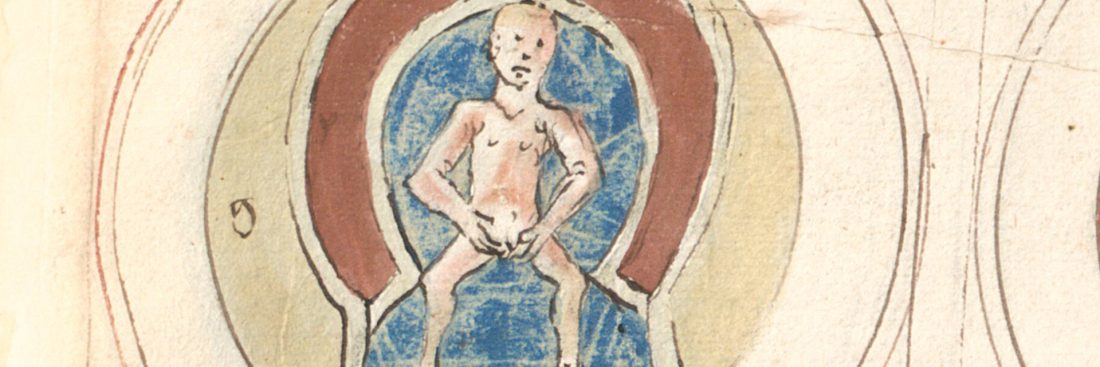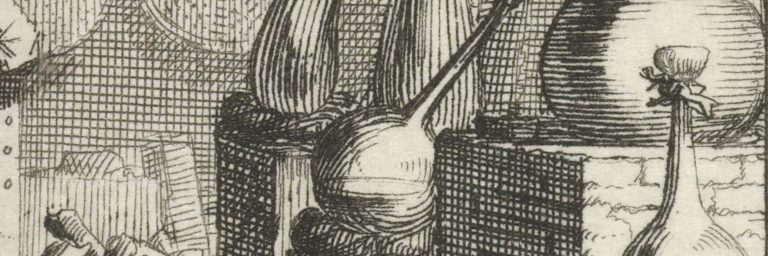Albert the Great and the Configuration of the Embryo


FORMA FLUENS
Histories of the Microcosm
Albert the Great and the Configuration of the Embryo
The Doctrine of the Formative Power
Amalia Cerritto
University of Pisa
Santorio Award

The Dominican theologian Albert the Great (c. 1193-1280) devotes several pages to investigating the dynamics involved in the configuration of the embryo. In the 13th century, ‘embryology’ as a specific branch of biology did not exist, and the study of the configuration of the living being was the prerogative of physicians as much as of theologians. The embryological discourse was the place of confluence between different fields of knowledge. Natural philosophy and medicine explained embryonic formation as a progressive development of bodily and psychic functions. This explicative model, however, was at variance with the theological assumption that only God infuses the rational soul into the embryo when its body is fully configured. What is, thus, responsible for the dynamics of the configuration of the embryo before its ensoulment?
Albert the Great stands out among the 13th-century Latin authors for his attempt to answer these questions through an interdisciplinary approach that intertwines medical, natural-philosophical, and theological concerns. [1] This approach is strictly connected to Albert’s intellectual endeavour as magister theologiae at Cologne. In 1248, the Dominican Order entrusted Albert with the foundation and organization of the Studium generale (i.e., a university for Dominican friars). Thus, he modelled the curriculum studiorum after the Aristotelian corpus, updated and receptive to the philosophical debates of the time. He was convinced that Dominican friars should be versed in theological disciplines and liberal arts. In such a framework, for the benefit of his Dominican students, he commented on the entire Aristotelian corpus. [2]
Far from being purely Aristotelian, in his philosophical commentaries, Albert takes the opportunity to criticize and question Peripatetic doctrines, allowing his theoretical standpoint to emerge more or less explicitly. [3] Through amplifications, glosses, and digressions, he makes room for his personal reformulation of the natural-philosophical, medical, and theological doctrines on embryogenesis available in the 13th century. [4]
The core tenet of Albert’s embryology is the virtus formativa, i.e, formative power, a shaping force responsible for crucial dynamics in the configuration of the living being. [5] In the 13th century, this notion was ascribed to Galen, whose medical thought was acquainted through the mediation of Arabic philosophers and physicians. [6] It was mainly from Avicenna’s work that Albert drew information on Galenism and its discrepancies with the Aristotelian natural philosophy.
Formative Power and Generation
Albert focuses on the dynamics of the configuration of the embryo, explaining how the morphological and functional structures are handed down from parent to child without presupposing the transmission of the soul.
In the generative process, parents transmit to the offspring not a soul but a likeness of the bodily powers and functions of the soul of which the virtus formativa is both vicar and carrier. This power, though, does not evolve in the embryo’s soul. It acts just before the soul reception as the principle of organization and configuration of the body.
The formative power is conveyed by the seed which virtually acquires morphology, function, and accidental traits from the generating body. To prevent any possible preformist interpretation of the formative power of the seed, Albert claims that this power does not contain latently bodily shapes and powers but is just the principle of the embryo’s morphogenesis. [7] Once in the embryo, the virtus formativa is localized in the heart, from which it starts the material realization based on the bodily design acquired from both parents.
Amalia Cerrito has received her BA (2015) and MA (2017) degrees in Philosophy from the University of Pisa. In 2021, she held her PhD in Philosophy at the University of Pisa and the University of Florence, with a research project in History of Medieval Philosophy on the notion of virtus formativa in Albert the Great. She has published on the interaction between natural philosophy and biblical exegesis in Albert the Great, and on his techniques of commentary in the De vegetabilibus. Her recent publications are devoted to the theoretical background of Albert’s natural philosophy, and to the influence of Neoplatonism on Albert’s zoology, botany, and embryology. Since 2018 she is a member of S.I.S.P. M. (Società Italiana per lo Studio del Pensiero Medievale), and a subject matter expert in the History of Medieval Philosophy at the University of Pisa.
Unlike Aristotle (who claimed that the male parent only had a formative and active role in embryogenesis), Albert maintains that females also play a formal role in this process. Taking the cue from Avicenna’s version of the Galenic doctrine on the female contribution, according to which males and females are equally formative and active, Albert makes a theoretical distinction between male’s formativa and female’s informativa. [8] The latter is the power of “being suitable to the form”, or “of being predisposed to acquire a specific form”, which guarantees the resemblance in traits (and gender) between mothers and offspring.
Albert introduces a hierarchy of formal levels in the generation of the living being within which the female formative power is a sort of in transition form. Albert makes this clear in his treatment of the so-called wind eggs (i.e., unfertilized eggs), which display the same external configuration as the fertilized egg. Devoid of male formative agency, the female formative power of the unfertilized egg is stuck in its way toward the animal form. Still, at the same time, it accomplishes a movement toward the form, promoting the configuration of an egg identical to the fertilized one. This demonstrates that, up to a certain point, albeit incompletely and imperfectly, the female formative power can configure matter.
Embryology within a Theological Outlook
Albert’s doctrine of formative power relies on the redefinition of the Aristotelian physical principles of substantial change. Along with matter and form, Albert also includes the formative power, i.e., a transitory and instrumental principle that ensures that matter shall be configured proportionally to the form and that the process of substantial change shall be teleologically oriented to the acquisition of a specific form. This power pertains to all the material substrates and, according to multiple levels of complexity, guarantees the material configuration of every natural entity, from the inorganic to the organic beings. This power has neither ontological continuity with the substantial form, nor requires any soul in actuality to accomplish its formative tasks. The rationality of the virtus formativa in leading the configuration of natural things s is connected to God’s providential plan. Such power is an instrument through which God guarantees the regularity of generation of inanimate and animate things.
In Albert’s Christian-Neoplatonic outlook, the formative power crosses the boundaries of physics and reveals its theoretical relevance within the broader framework of the Divine Providence and its working in nature, functioning as a bridge principle between God and the dynamics of created nature.







